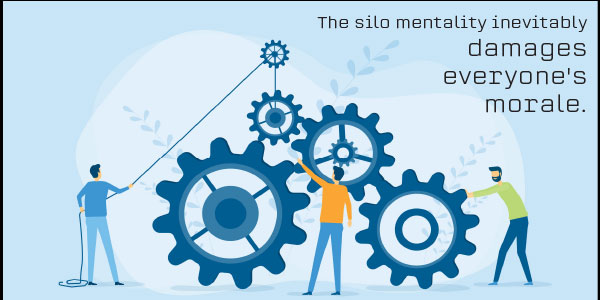My name is Doug Kirk, and I’m a self-proclaimed process junkie who has spent my entire working life in the collision repair industry since leaving school at 15 years old. Starting off as a paint technician in the late 1970s in Europe, I was lucky enough to rise to global director of business development for various paint manufacturers.
I’m a process junkie because I was born lazy. Most process-driven people are lazy; it’s not a bad thing, we wear it as a badge of honor. My mantra is “make myself redundant” today. I’m the creator of optimal outcomes (COO) for Optimal Agility Ltd. and work with many companies around the world that share our views of a silo-free, optimally agile environment.
I was reminded recently of a quote that has always resonated with me: “A patient cured is a customer lost.” What it really means is, if a consultant or trainer empowers/teaches the client to fix all his or her issues quickly, then the client has no more need for that consultant or the offered services, and thus the consultant loses out. So to make sure that consultants are adequately rewarded for their knowledge transfers, they need to find ways of making sure the clients learn at a pace that rewards them over time or never get the full picture.
The Continuous Improvement Myth
Process improvement methodologies are not new. They did not begin with the Toyota Production System, nor did they begin with Ford’s moving production line or the standardization of nut-and-bolt threads during the industrial revolution in the U.K. They did not even begin with the Gutenberg printing press as far back as the 1400s! By definition, they’ve been around since time immemorial, and they have evolved as the needs of the consumer or the business have evolved. Change has been the only constant.
Charles Darwin identified (not invented) evolution, while W. Edwards Deming coined the phrase, “It is not necessary to change; your survival is not mandatory.”
Breathe easy. That is the last point of academia we shall have in this article, as this is one of the reasons most methodologies fail: They get overcomplicated by academics and consultants and diluted to a series of tools.
Today within the collision repair industry, there are three main methodologies being utilized with various degrees of success: lean, theory of constraints and six sigma. The one thing all three have in common is they were all created for the manufacturing industry where there is high volume and low variability. The collision repair market, however, is opposite of this in that it is low volume and high variability due to no two accidents being the same and that the time taken to process a single repair is measured in days or weeks compared to the minutes that Toyota takes to produce a new car.
So back to the question at hand: Why do most shops not benefit from these different methodologies?
- Siloed implementation
- Seen as a series of tools
- The desire to maximize departmental profits — at the cost of total profit
- The desire to minimize departmental costs — at the cost of total output
- Failure to identify the correct key performance indicators (KPIs) and connect complementary KPIs
- Failure to use data effectively — in real time.
Silos: The Silent Killer
Silos occur in a business when departments or management groups do not share information, goals, tools, priorities or processes with other departments. Instead, they work against each other.
The silo mentality is ultimately fueled by a singular focus on the efficiency of each department or persons within that department rather than the cognitive optimal utilization of all the departments within the process. This is compounded within industries that are broken into phases (like collision repair), therefore the process needs to be agile enough and optimally focused to adjust for these various phases. The silo mentality impacts operations, reduces employee morale and contributes to the overall failure of a company or process regardless of the improvement methodology being practiced. And, they’re far more common than you might think — just have a look inside your business.
Think of the body department. The need is to pass vehicles downstream to the next repair phase/department, but we give each technician two to three or sometimes more vehicles at a time. So, they ultimately end up just flagging hours to meet their personal goals or needs, but they do not complete the tasks or pass the vehicle downstream. In short, they generate work in process (WIP), but the only thing is: How much WIP are they allowed to generate?
The silo mentality is generally hidden/masked with the drive for departmental efficiency between managers within separate goals and targets. Take, for example, parts departments having a margin target without taking into consideration what effect their purchases have on the panel or paint departments, or rewarding individual departments on their flagged hours produced (completed) and not hours handed over to the next department.
Material margin is also a great example of silo measurement. For example, overuse of a product such as abrasives to create a greater material margin is seen as a silo, but as the effectiveness of the abrasive reduces over time, the amount of labor (the highest cost in the process) increases, and thus the effect on the total process time and cost is catastrophic. So, these two metrics (material cost plus labor cost in time) need to be connected to form something we call “operational output.” In sum, it’s about utilization of the combination rather than the “sticker price” of the abrasives.
Most businesses are focused on efficiency and don’t consider utilization — a huge issue within most businesses, since most businesses measure efficiency as the “key” KPI while barely considering utilization.
Measuring departmental efficiency is a silo that will drive up WIP, and WIP is a cost. Think of someone working on the wrong car at the wrong time just to achieve a personal goal of X hours flagged (not handed over) per week, resulting in the downstream department being starved of work. I often hear this referred to in the U.S. as working on the “gravy.”
The silo mentality inevitably damages everyone’s morale, especially when employees become aware of the problem and are unable to do anything to change it.
Breakeven: Upside Down Ledger
If you don’t know where you are, how do you get to where you need to go?
We repair vehicles, but we sell hours; therefore, we can break most things down into vehicles required (on average) or hours required regardless of the unit selected, giving you a run-rate target. By simply taking all your overhead collectively (the amount of money you need to cover costs) and dividing it by the unit of measure you select, you can create an operational output breakeven target. This run-rate can then be used to measure your success per time portion you desire, whether that’s daily or weekly.
The goal is to transfer the desired number of units required (vehicles or hours) to breakeven plus the all-important profit margin you require in the desired time slot (daily) downstream to the other departments in your business, e.g. panel to paint, paint to refit, etc.
Banish the maximization of silo profits in parts, paint, and materials and labor, as you cannot achieve maximums in all three at the same time. Instead, look to optimize the collective margins, which we call connected metrics.
Data Technology
Almost every shop manager/owner I’ve met on my travels has created various tools they use to supplement their physical management efforts, which invariably take the form of spreadsheets or standard operation procedure manuals. However, these tools require a huge amount of time and effort to keep up to date. Plus, when the manager is absent, the system fails.
Every time I’m asked what I want from a job/position, I say: to make myself redundant! Anytime I drive somewhere, even if it’s a simple journey I make daily, I use the WAZE app. Why? Because each day’s traffic situation differs and, as WAZE is connected to real-time data, it allows me to make the most optimal decision.
Any process is only as good as the data it harvests and the manner it is utilized. Data does not make you king or queen; it is what you do with data that counts. My father was a carpenter and often told me, “Measure twice, cut once.” Similarly, the one constant about the successful managers/owners I’ve met on my travels is that they:
- Think before they act
- Optimize their businesses
- Consider investment in technology as vital
- Listen as much as they talk.
There is a better way.

















